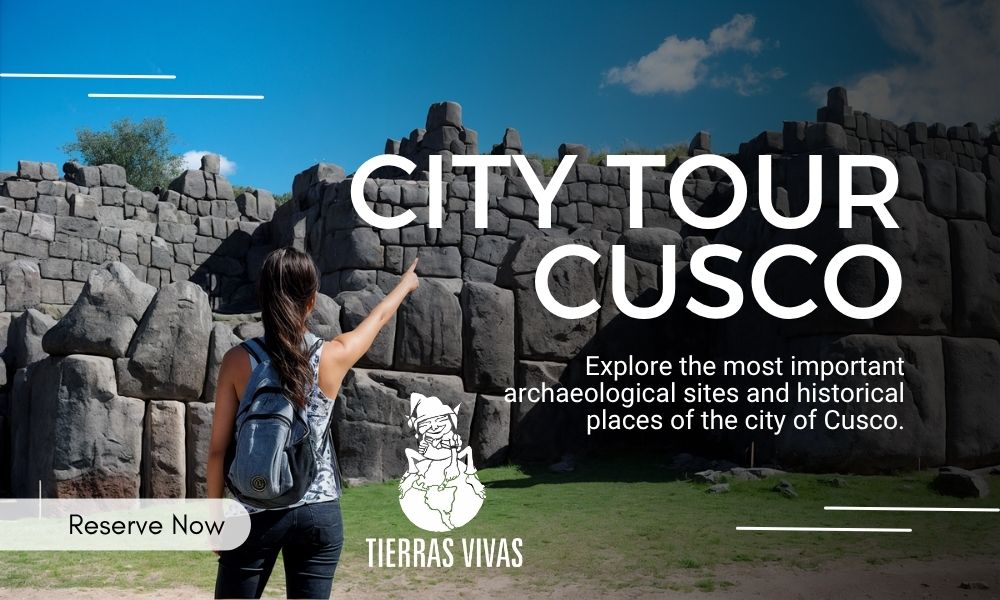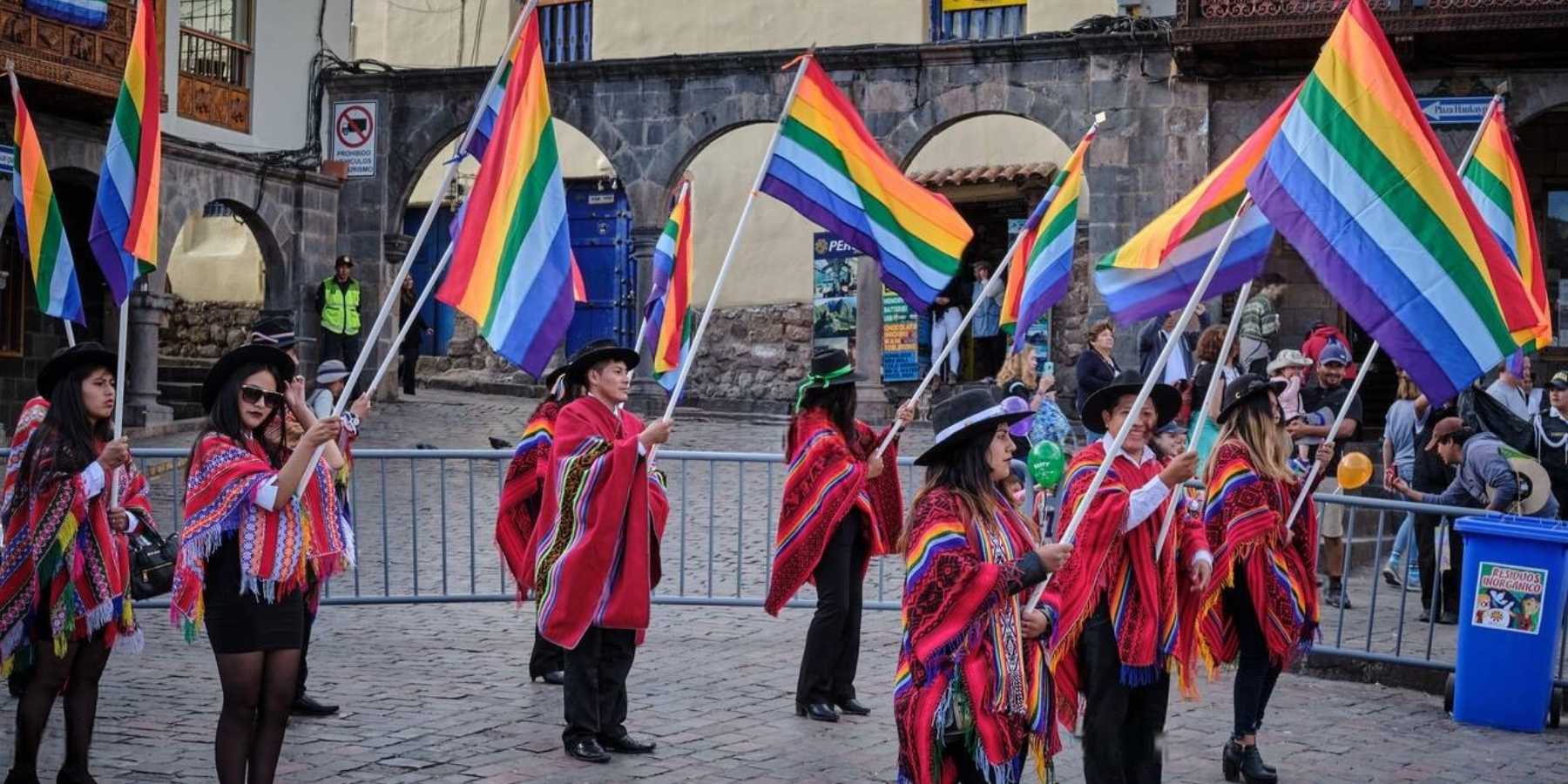Those who visit the Main Square can see that, next to the national emblem, a seven-colored flag often flies, standing out in the Peru Panorama. This is the flag of Cusco, a symbol that for decades has been wrongly identified by many as the flag of the Inca Empire. However, historical research has determined that the concept of a "flag" as a national banner did not exist in the Tahuantinsuyo; the Incas used other elements like standards to represent their family lines or military units.
The origin of this emblem is fairly recent and is linked to local communication. In 1973, for the 25th anniversary of Radio Tahuantinsuyo, the announcer Raúl Montesinos Espejo designed this banner with horizontal stripes of red, orange, yellow, green, cyan, blue, and purple. Five years later, in 1978, the Municipality of Cusco officially adopted this proposal as the symbol of the city, based on the idea that it also represented the historical identity of the region.
Although the Cusco flag has a clear visual link to the rainbow, its design aimed to recover the symbols of Andean peoples. Over time, it has become a central part of the Cusco identity, present in all official ceremonies and festivities of the imperial city.

Why does the Cusco flag have the colors of the rainbow?
The choice of the seven colors for the flag of Cusco, Peru was not random; it was based on the regular presence of the rainbow in the Andean world view. For the Incas, this weather event was known as K'uychi and was seen as a sacred deity linked to fertility and the connection between the earthly world and the heavenly world. When designing the emblem, the goal was for the color layout to show the diversity and unity of the peoples that made up the Tahuantinsuyo.
It is common for visitors to confuse this symbol with a supposed ancient Inca Flag because of its cultural weight and its presence at historical sites. However, its design comes from a 20th century effort to give the city a visual badge that matched the elements of nature that the ancient Peruvians worshiped. Thus, the colors red, orange, yellow, green, cyan, blue, and purple came together to form a banner that today represents the pride and resistance of the Cusco culture before the world.
The Sun of Echenique: The new central symbol
The original design of the Cusco flag was based on the wiphala, an emblem from the Aymara people made of 49 squares with the colors of the rainbow. Although for a long time the simple version with seven stripes was accepted as the flag of the Inca Empire, the need to give it its own unique identity led to an official change in the 21st century. The Provincial Municipality Council, through a law, decided to include the Sun of Echenique in the center of the flag.
-
About the Sun of Echenique
The Sun of Echenique is a gold piece considered a Cultural Heritage of the Nation. It is a round gold disc from before Inca times that was used as a high-ranking ornament by ancient rulers. Its design shows cat-like and solar features, representing power and divinity. By including this element, the Cusco flag is not only different from other international flags, but also strengthens its link with the ancient legacy and the deep history of the region.

What is the Tahuantinsuyo flag?
According to the data that have allowed us to know the initial idea of the flag, it is indicated that it is to represent the government and democracy of Cusco, but that it has been associated with a great empire led by the Incas. Following the official publications made by the government, the use of both terms, both the Cusco flag and the Tahuantinsuyo flag, is acceptable.
What do the colors of the Tahuantinsuyo flag mean?
It is important to specify how this flag was created and why it represents this Peruvian territory. It is known that in 1973, a popular radio called Tahuantinsuyo was celebrating its first 25 years of foundation. In the midst of these festivities, the announcer Raúl Montesinos Espejo appeared with the idea of a design for a flag, which had seven colors. The choice of shades is related to the rainbow. For the year 1978, the Municipality of Cusco officially adopted this creation. In addition, it was considered that this is also the insignia of the Inca empire.
The conception of this project had a distinctive checkered type, which had 49 paintings, each one painted with one of the colors of the rainbow. A bill (No. 03675) presented in Congress makes the following description: "The seven color flag with horizontal stripes was the sacred symbol of the Tawantinsuyo that unified the 4 suyos and was maintained until many years after the arrival of the Spaniards, demonstrating the identity and resistance of the indigenous peoples".

What does the flag of the 4 Suyos mean?
This represents the Tahuantinsuyo as such. This name is made up of two Quechua words: “tahua” which means four, and “suyo” which means “region”. It is called this way because this territory was divided into four, which were called: Collasuyo to the southeast, Chinchaysuyo to the northwest, Antisuyo to the northeast, and Contisuyo to the west.
The flag of Cusco today
As far as the local community is concerned, for better or worse, many Peruvians are still unaware of the origin of the famous Cusco flag. Considering that there is currently no major controversy over the flag, the imperial city is still adorned with it. In addition, it has been chosen to give it the focus of what would be a modern representation of the Inca Empire. Likewise, due to its similarity, both travelers and locals come to confuse the Tahuantinsuyo flag with the LGBT flag (gay flag, rainbow flag, pride flag, diversity flag, etc.). Doubt also arises in this regard, since both flags saw the light at the same time. However, the meaning of the two is totally different, not to mention the light blue stripe of difference.
Presence at the Inti Raymi
The Cusco flag takes a special role during the city's jubilee celebrations, reaching its highest display every June 24. During the performance of the Inti Raymi or Festival of the Sun, this emblem flies in the three historic settings: the Qorikancha Temple, the Plaza de Armas and the Sacsayhuamán esplanade. Its presence symbolizes the union between the glorious past of the Tahuantinsuyo and the current identity of the people of the region.
Seeing the flag displayed along with the hundreds of artists who represent the Inca court is one of the most colorful and meaningful experiences for visitors. If you want to witness this impressive cultural event and see the flag in its full glory, we invite you to plan your visit in advance.
What is the difference between the Tahuantinsuyo flag and the LGBT flag?
Although a collective confusion can be generated by both flags, they are similar, but not the same. A main difference is the number of colors that each one has. The cusqueña has 7 and the one that represents the LGTB+ community has 6, without considering the light blue tone. The Tahuantinsuyo flag is an original design by the communicator Raúl Montesinos Espejo, while the gay community was represented by a creation by Gilbert Baker, an American activist and designer.

Best Trekking and Tours in Peru
Many are the routes that take you to Machu Picchu, but none is like the Inca Trail tours, the most famous pedestrian path in the Americas. After flying from the capital of Peru, Lima, you will arrive in Cusco to walk for four days along a path through forests and dense fog, millenary stone steps and discovering the ruins of ancient fortifications and Inca cities, and all the time enjoying majestic views.
- Sacred Valley Bike Tour
- Honeymoon in Machu Picchu
- 1 Day Inca Trail Hike to Machu Picchu
- Sacred Valley Tours
- Lares Trek to Machu Picchu 4 Days
- Huchuy Qosqo Trek to Machu Picchu
- Short 2 Day Inca Trail Hike to Machu Picchu
- 2 Day Inca Trail with Camping
- Apu Ausangate Trek 7 days
- 4 Day Jungle Trek to Machu Picchu
- Inca Quarry Trail to Machu Picchu
- Urubamba River Rafting
- 5 Days Salkantay Mountain Trek
- 3 Days Salkantay Trek to Machu Picchu
- Huchuy Qosqo Trek to Machu Picchu
- 7 Lakes Ausangate Trek
If you want to visit Machu Picchu, we recommend you to book your Machu Picchu ticket in advance, so you will enjoy your vacation in Machu Picchu without any problem.






